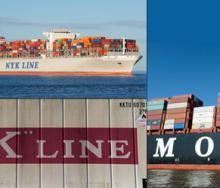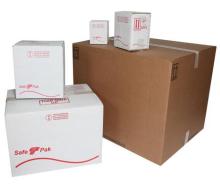A recent decision of the United Kingdom’s Court of Appeal confirmed that a cargo owner can ensure that a shipping carrier bears a greater portion of liability for containerised cargo damaged while carried by sea by ensuring that each unit of cargo that is packed into the container is properly described.
The decision in Kyokuyo Co Ltd v Maersk Line increases a shipping carrier’s liability for cargo damaged while carried by sea. The dispute in this case arose out of damage to a cargo of blue fin tuna loins and other parts shipped from Spain for delivery to Japan. The 1226 tuna loins were packed ‘as is’ into three containers without any wrapping, packaging or consolidation of any kind, and the tuna parts were packed into 460 x 20kg bags which were packed into one of the three containers. The buyer discovered that all of the tuna loins packed into one of the containers, valued at £858 000.00, had been damaged due to raised temperatures during carriage.
The loose packaging of the tuna loins into the containers raised an interesting issue. Article IV Rule 5 of the Hague Visby Rules limits a carrier’s monetary liability to a certain amount per package or unit of cargo damaged. In this case, where the tuna was packed into containers, the question was whether the loose pieces of tuna could be considered to be “units” according to the Rules, or whether the container in which the tuna was packed constituted the “package or unit”. The carrier argued that the container constituted the package or unit and that its liability was limited to just one times 666.67 SDRs (about $ 870). Conversely, the cargo owner argued that each tuna loin was a unit or package and the carrier’s liability was accordingly limited to 500 times 666.67 which is SDR 333 335 (about USD430 000).
The Court therefore needed to decide whether the phrase “unit or package” referred to in the Hague Visby Rules meant the container the individual pieces of tuna were packed into or the individual pieces of tuna themselves.
The tuna was described in the waybill as “206 pieces frozen blue fin tuna loins”. The Court found that the frozen loins were sufficiently enumerated and described in the waybills for each loin to be considered a separate “unit” for the purposes of the Hague-Visby Rules. The word “enumeration” in the Rules requires only that the cargo is described in words or figures of the number of packages or units of the cargo, and “as packed” is merely descriptive. Accordingly, the words “enumeration…as packed” do not require that the bill of lading specify how the packages or units are packed in a container for those units or packages to be deemed as such for the purposes of limitation of liability in the Rules.
The Court accordingly found that the carrier’s liability was limited to 666.67 SDRs per unit of tuna loin damaged.
This case is important for carriers, cargo owners and insurers as the scope of the limitation of a cargo owner’s liability is significantly increased if the cargo packed into a container is described in words or figures (ie, 200 pieces frozen blue fin tuna loins). Proper description of the units of containerised cargo will mean that each of the pieces or items that are packed into the container will be considered a “unit” by which the carrier’s liability will be calculated, instead of the container itself being the single unit.
Our courts are likely to adopt the same approach if this dispute were to arise in South Africa.
Yasmine Wilson is a Candidate Attorney at Norton Rose Fulbright SA with experience practising in the areas of insurance law, commercial litigation, employment and labour law and maritime law.










